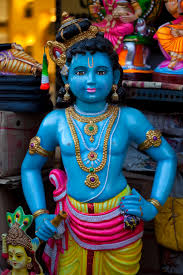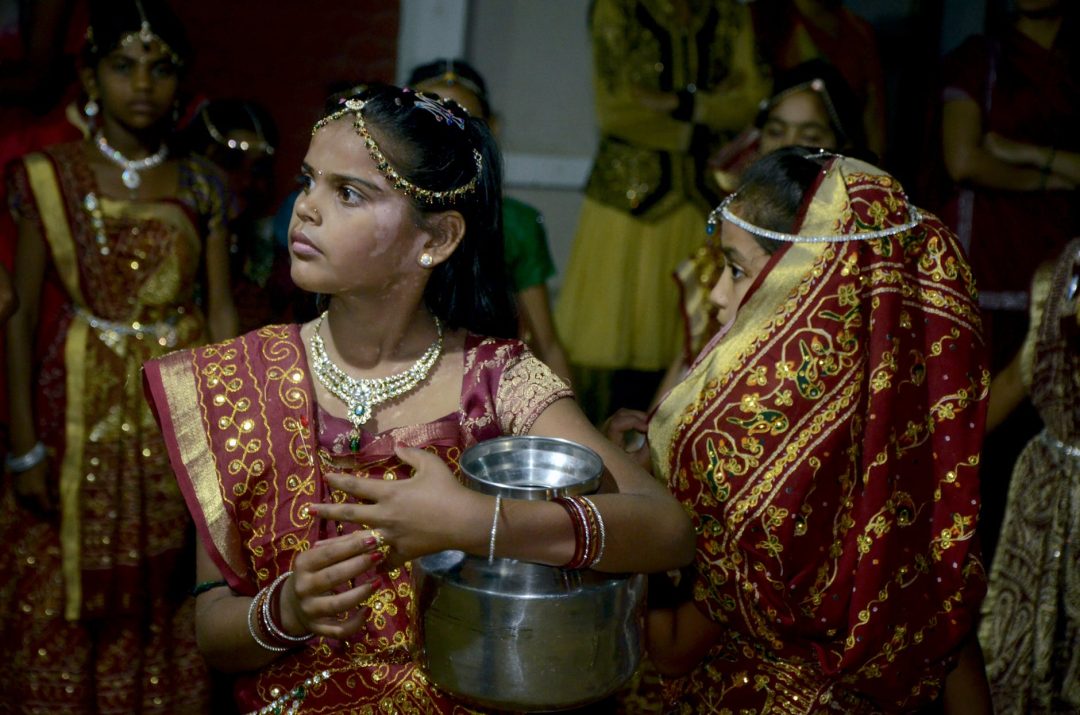Hindus’ many forms of prayer and manifestations to gods
Navratri or pronounced as Na-va-ra-thri is a festival celebrating God in His manifestation as the Mother in the forms of Hindu goddesses Durga, Letchumi and Saraswathi which lasts over the first nine days in the Ashwin (7th month) month of the Hindu calendar.
The first 3 days honours Durga, the Goddess of Destruction. Her idol is most often portrayed as riding a lion. She is the divine spouse of Lord Shiva and the mother of Lords Ganesha and Murugan. She is worshipped in many forms corresponding to her two most important aspects, benevolence and fierceness.
 In Malaysia, on the first night of Navratri, teenagers are encouraged to come home early as Durga is believed to be cleansing the world for the start of celebrations in her honour and anyone who happens to be in the way might get hurt. The spiritual leader of my temple would sow barley seeds in a bed of soil at the altar which has been made up to give Durga the place of honour.
In Malaysia, on the first night of Navratri, teenagers are encouraged to come home early as Durga is believed to be cleansing the world for the start of celebrations in her honour and anyone who happens to be in the way might get hurt. The spiritual leader of my temple would sow barley seeds in a bed of soil at the altar which has been made up to give Durga the place of honour.
On the 4th to 6th days which are in honour of Lakshmi, the Goddess of Wealth, the altar is again rearranged to give Lakshmi centre stage. Her idol often depicted as standing or sitting on a lotus flower can be found in almost all Hindu homes and most definitely at all places of business. It is human nature that has mankind associating Lakshmi with material wealth and only petitioning her for riches. She bestows peace and both physical and spiritual wealth on her worshippers.
The 7th to 9th days are devoted to Saraswathi, the Goddess of Learning and Knowledge. This manifestation of Mother is almost always depicted wearing white signifying purity and carrying prayer beads, a book or playing the sitar. Children and youths appeal to her for wisdom and knowledge in their lives. The festival culminates on the 10th day with the Dussehra festival for the triumph of good over evil.
The nights of the festival are often started with prayers invoking the presence of the deities.
Then bhajans (religious songs) are sung with devotion to please the Goddess and to make ourselves closer to Godhood. During Navratri, we, in Malaysia, make it a point to only sing Devi (Goddess) bhajans as this is the period where Mother is celebrated.
The children from Bal Vikas studies will put on plays that depict chapters in the Bhagavad-Gita where the qualities of these three manifestations are featured.
We also do puja to honour our mothers and for those of us not lucky enough to still have our mothers around, we honour the elderly who have lived a good life as Mother. We bend down to kiss her feet and she bestows her blessings on us. The offerings on the altar is taken out and a feast is had each night after the celebrations. Some places will have a yagna (ceremonial sacrificial fire) on the night of Dussehra.
Navaratri celebrates the spiritual progress of man
The cosmic energy is depicted in the three forms that we can most easily associate with. The first 3 days devoted to Durga the Destroyer, signifies the destroying of our negative tendencies to make us open to receiving spirituality. With the negativities destroyed, we then worship Lakshmi who bestows according to the needs of her children. We may be praying to her for material wealth but who are we to know what we need better than the Goddess herself. Then the last three days devoted to Saraswathi is for us to find the divine truth in all. She gives us the wisdom to differentiate between good and evil to find our way towards the supreme Truth.
So the message that Navaratri holds is for us to lead a worldly life without neglecting the spiritual aspects. We invoke Durga’s help to surmount all obstacles, pray to Lakshmi for peace and prosperity then upon Saraswati to gain knowledge. All these are just equally necessary for a full and complete life, physically and spiritually. In reality, we are just attempting to invoke the Shakti (cosmic power) that is within ourselves.






